News Beat
News Beat reporting is an idrw.org initiative to let our Readers to report News Based on Actual facts but some how has not been reported in Main Stream Media .
SOURCE: RAUNAK KUNDE / NEWS BEAT / IDRW.ORG

Noida-based Veda Aeronautics Private Limited (VAPL) has been making waves in the defence sector with its cutting-edge technology. Earlier this year, VAPL secured a significant contract from the Indian Air Force (IAF) valued at 300 crores. In an exclusive interview with News9, Dipesh Gupta, the Managing Director of VAPL, confirmed that the contract is for their innovative S-UMS (Smart Unmanned Munitions System), also known as Sureshastra MkI. This development marks a groundbreaking step in the field of military drones.
The S-UMS, or Sureshastra MkI, is a remarkable jet-powered, catapult-launched fixed-wing swarm drone, the first of its kind to be adopted by the IAF. It measures 3.5 meters in length, boasts an impressive range of 150 kilometers, and features a wingspan spanning 3 meters. Powered by a turbojet engine, this drone opens up new possibilities for the IAF in terms of precision strikes and tactical operations.
Continue readingSOURCE: RAUNAK KUNDE / NEWS BEAT / IDRW.ORG
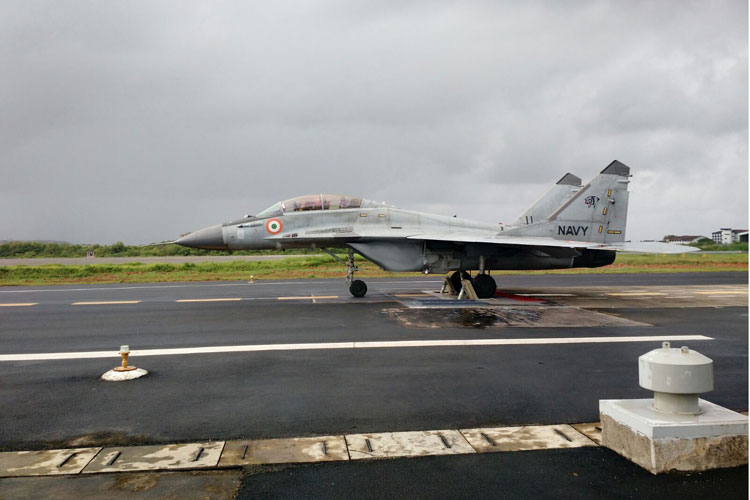)
In a significant move towards self-sufficiency and enhancing the indigenous capabilities of its fleet, the Indian Navy is embarking on a mission to indigenize various equipment and components onboard its existing fleet of MiG-29K fighter aircraft.
The scope of this ambitious indigenization project encompasses a range of critical components and systems related to the MiG-29K fighters. Among the items targeted for indigenization are the Multi-Function Display, Integrated Standby Instrument System, tires, ground support equipment, chaff, and flares. This initiative reflects the Indian Navy’s commitment to reducing dependency on foreign suppliers and strengthening domestic manufacturing capabilities.
Continue readingSOURCE: RAUNAK KUNDE / NEWS BEAT / IDRW.ORG
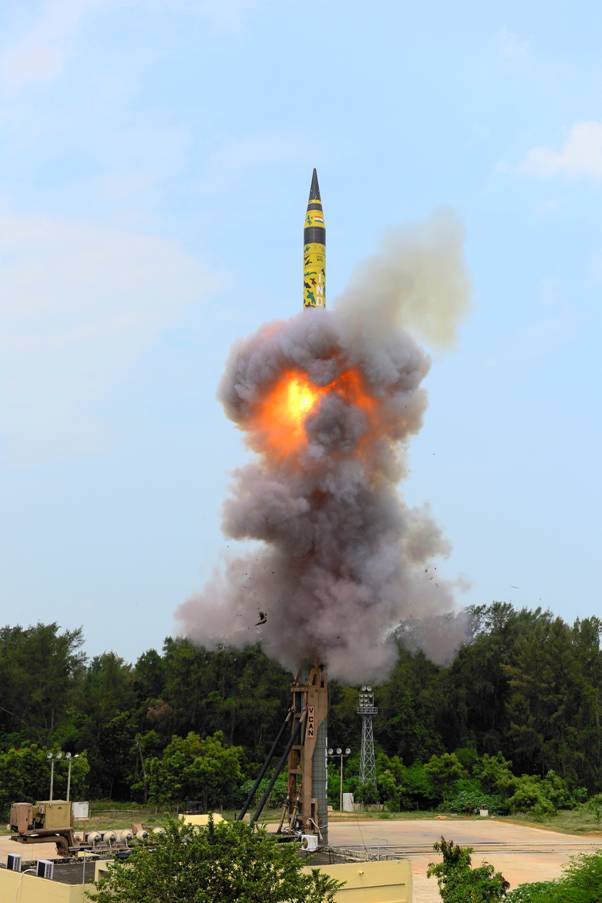
The Chairman of the Defense Research and Development Organization (DRDO), Dr. Sameer V Kamath, has categorically denied the existence of any Agni 6 missile program. Speaking at the inauguration of the DRDO Excellence Regional Center at the Indian Institute of Technology (IIT-BHU), Dr Kamath clarified that there is no official Agni 6 missile project, and the government of India has not sanctioned any such program.
Dr Kamath’s statement was in response to questions from the media regarding recent reports suggesting the development of an Agni 6 missile by DRDO. He emphasized that any news of the Agni 6 missile program is purely speculative and lacks official confirmation.
Continue readingSOURCE: RAUNAK KUNDE / NEWS BEAT / IDRW.ORG

The Indian Navy is set to achieve a significant milestone in its pursuit of self-reliance in defence technology with plans to equip its second Indigenous Aircraft Carrier (IAC-II) with locally manufactured arresting gears and braking machines. These critical components were previously imported from the Proletarski Zavod (Proletarian Factory) in Russia for the first indigenous aircraft carrier, INS Vikrant.
The IAC-II project is a vital part of India’s naval modernization efforts, aiming to bolster the nation’s maritime capabilities. As part of this endeavour, the Indian Navy has determined the need for three sets of arresting gears and braking machines for the IAC-II aircraft carrier, which is slated for development and certification by 2026-27.
Continue readingSOURCE: RAUNAK KUNDE / NEWS BEAT / IDRW.ORG

The Indian Air Force (IAF) is taking strides towards enhancing the safety and performance of its pilots by seeking private sector collaboration for the development of a state-of-the-art Anti-G Suit (AGS). This initiative falls under the iDEX Open Challenge format, a flagship initiative of the Indian Ministry of Defence aimed at fostering innovation and advancements in defence technology.
The current generation of anti-G suits offers protection to pilots up to 6 Gz, whereas modern aircraft are designed to withstand up to 9 Gz. This discrepancy creates the risk of G-induced loss of consciousness, reduced pilot attention, fatigue, and compromised combat effectiveness during high-G manoeuvres. To bridge this gap, the IAF is committed to developing an advanced AGS that can automatically protect up to 9 Gz without imposing additional strain on the pilot.
Continue readingSOURCE: RAUNAK KUNDE / NEWS BEAT / IDRW.ORG
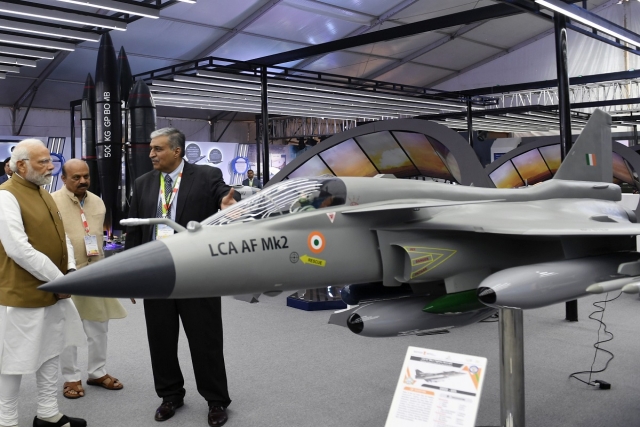
India’s state-owned aerospace company, Hindustan Aeronautics Limited (HAL), has outlined its plans to roll out the first Pre-Production Tejas Mk2 prototype by late 2024. This rollout, however, has been delayed by over a year. Subsequently, HAL intends to roll out five more Pre-Production Tejas Mk2 aircraft at regular intervals, with each rollout occurring in less than eight months. The objective is to complete the developmental flight trials of the program by the end of 2028.
The Tejas Mk2, weighing approximately 17.5 tons, will see the development of six Pre-Production aircraft, each incorporating over 75 per cent indigenous content from the early stages of production. The Indian Air Force (IAF) will actively participate in the developmental flight trials, including User Assisted Trials, starting from the third aircraft in the series.
Continue readingSOURCE: RAUNAK KUNDE / NEWS BEAT / IDRW.ORG
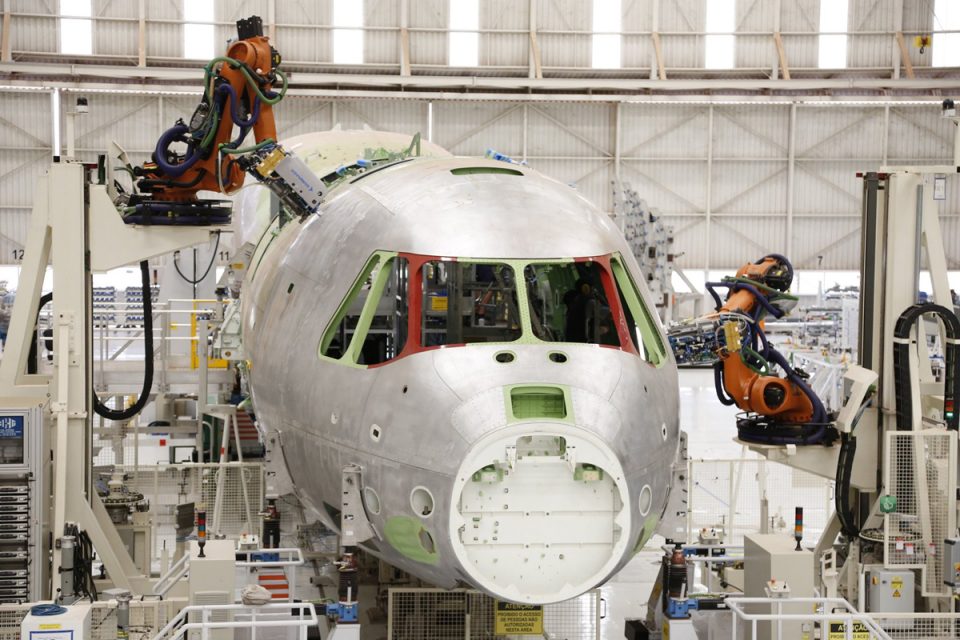
Embraer Defence & Security is actively monitoring developments in India and engaging in discussions with various Indian entities, including both government and private stakeholders. These discussions pertain to the Indian Air Force’s (IAF) Medium Transport Aircraft (MTA) project. Joao Bosco da Costa Junior, the President and CEO of Embraer Defence & Security, has confirmed the company’s interest in participating in this project.
Embraer has responded to the IAF’s Request for Information (RFI) for 40-80 Medium Transport Aircraft, offering its C-390 Millennium aircraft for consideration. The company is committed to selecting an Indian partner by the end of this year, a crucial step in forging collaboration with the Indian defence industry.
Continue readingSOURCE: RAUNAK KUNDE / NEWS BEAT / IDRW.ORG

The Indian Army is exploring the possibility of acquiring the Garuda 105 V2, an ultra-lightweight artillery gun system, to enhance its capabilities for high-altitude warfare. This artillery system is based on the locally developed 105mm/27 calibre light gun and has undergone rigorous testing in challenging high-altitude environments such as Sikkim.
The Garuda 105 V2 artillery gun is being considered for procurement due to its exceptional performance during field trials. According to the Kalyani Group, the manufacturer of the system, the gun has successfully fired more than 2800 rounds during testing, showcasing its reliability and effectiveness.
Continue readingSOURCE: RAUNAK KUNDE / NEWS BEAT / IDRW.ORG
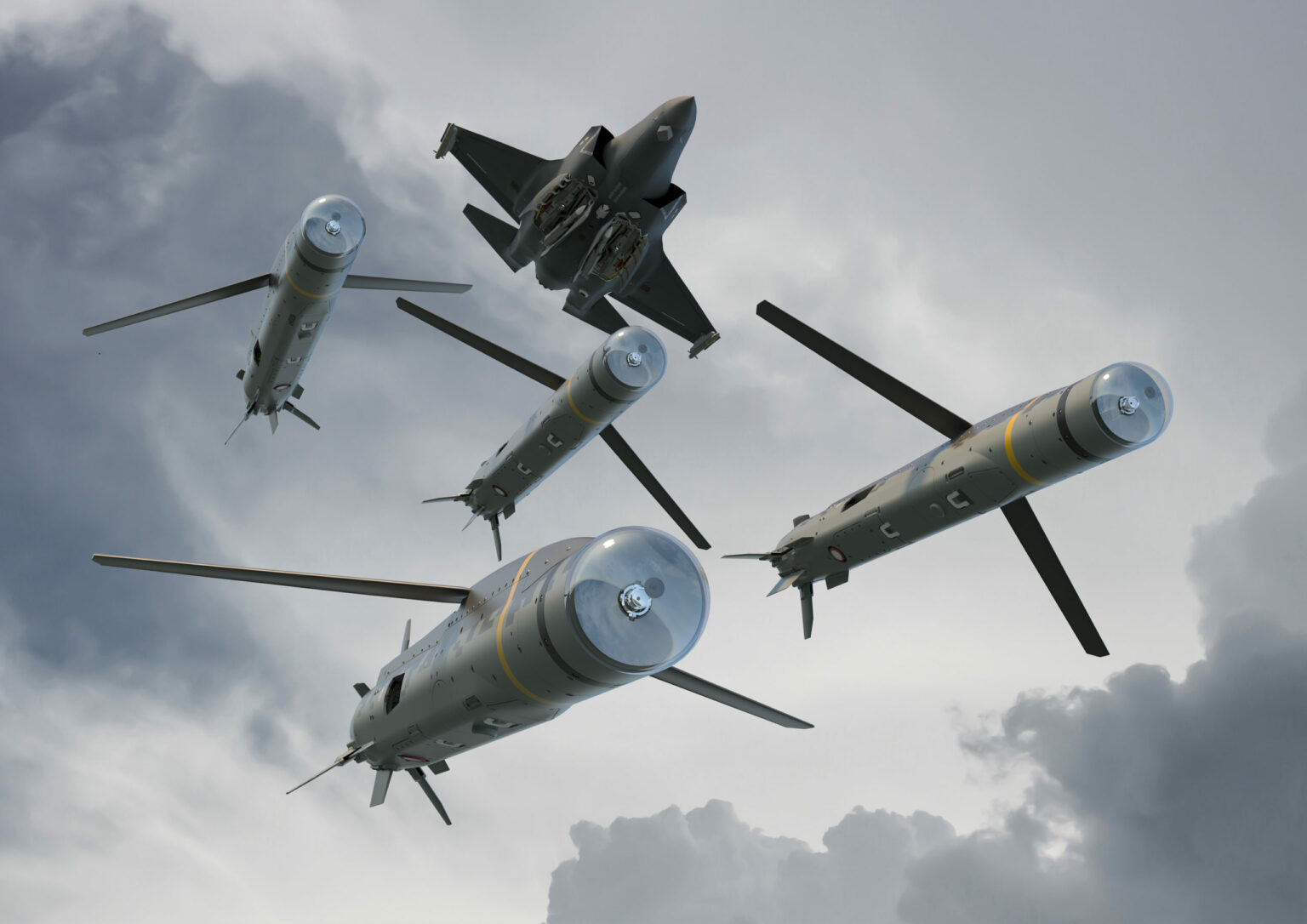
In a bold and forward-looking move, India is set to embark on an ambitious journey to develop state-of-the-art air-launched anti-radiation combat swarm drones, representing a monumental advancement in its defence capabilities.
These cutting-edge drones are purpose-built for the critical mission of suppressing and neutralizing enemy airdefences, a role known in military terms as SEAD (Suppression of Enemy Air Defenses) and DEAD (Destruction of Enemy Air Defenses).
Continue readingSOURCE: RAUNAK KUNDE / NEWS BEAT / IDRW.ORG
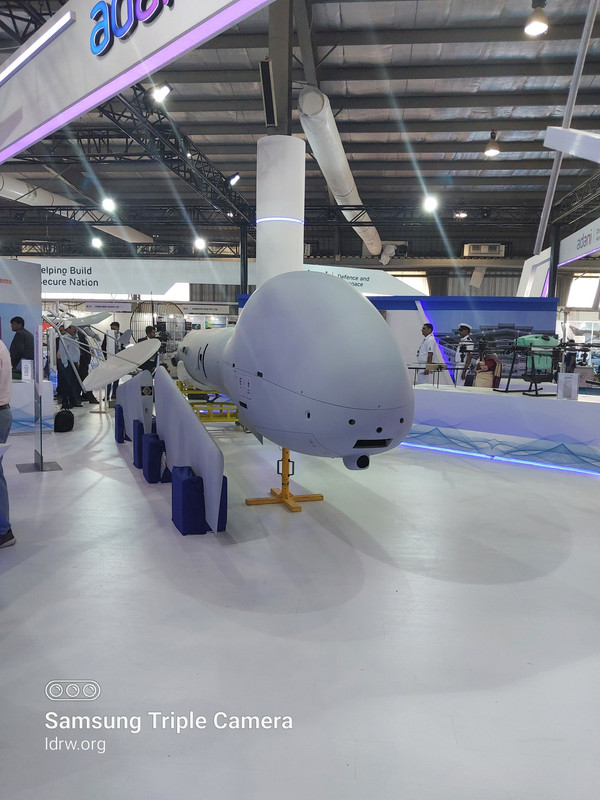
The Adani Group’s Land Systems, Defence & Aerospace division has achieved a significant milestone by securing orders from the Indian Navy for the “Drishti 10 (Starliner),” an Elbits Hermes 900 MALE (Medium Altitude Long Range) Unmanned Aerial Vehicle (UAV) designed for export markets.
Ashok Wadhawan, the Head of Land Systems, Defence and Aerospace at Adani Group, confirmed that the Drishti 10 has been localized by the company, enhancing its capabilities to meet specific Indian Navy requirements. This achievement marks a significant step toward promoting self-reliance in defence manufacturing in India.
Continue readingSOURCE: RAUNAK KUNDE / NEWS BEAT / IDRW.ORG
India’s ambitious “Super Sukhoi” Program has gained official backing from the Indian Air Force (IAF), marking a significant milestone in the upgrade package for the entire Sukhoi-30MKI fleet. The program, which commences with 86 units and will eventually cover the entire fleet, focuses on enhancing the performance and longevity of these formidable aircraft.
One crucial aspect of this program involves discussions between Hindustan Aeronautics Limited (HAL) and the Gas Turbine Research Establishment (GTRE) to incorporate performance and longevity improvements into the AL-31F engines, which are a vital component of the Sukhoi-30MKI aircraft.
Continue readingSOURCE: RAUNAK KUNDE / NEWS BEAT / IDRW.ORG

In a significant development, the Indian Air Force (IAF) has received the first trainer version of the Light Combat Aircraft (LCA) Tejas, marking a milestone in the country’s indigenous fighter aircraft program. The formal handover ceremony took place in the presence of CAS Air Chief Marshal VR Chaudhari and HAL Chief C B Ananthakrishnan.
This delivery is part of the initial order for 18 LCA Tejas Trainer aircraft that the IAF had placed in a previous contract. However, the IAF is set to expand its fleet of Tejas Trainer aircraft further with the upcoming contract for 97 more Tejas Mk1A jets.
Continue readingSOURCE: RAUNAK KUNDE / NEWS BEAT / IDRW.ORG
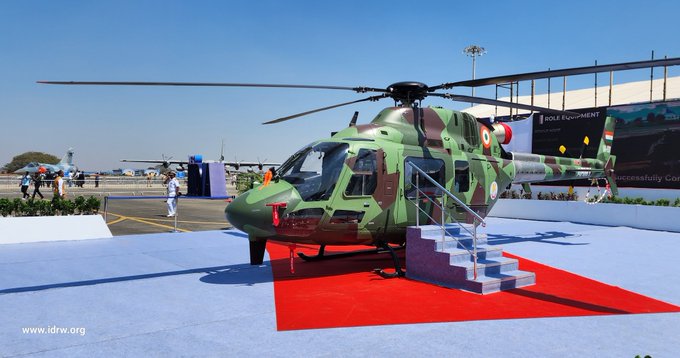
Indian Air Force Chief, Air Chief Marshal V R Chaudhari, has confirmed that Hindustan Aeronautics Limited (HAL) has embarked on the development of the Mk2 variant of the Light Utility Helicopter (LUH). This move comes in response to the Indian Army’s request for certain improvements to be incorporated into the indigenous LUH, which it has already received.
The Mk2 variant of the LUH will come equipped with an autopilot system, one of the specific requirements put forth by the Indian Army. Additionally, HAL is working on implementing several minor improvements as per the Army’s recommendations.
Continue readingSOURCE: RAUNAK KUNDE / NEWS BEAT / IDRW.ORG

In the last five years, Russian and Chinese arms exports have witnessed a significant decline in their global market share. This shift in the global arms trade landscape has provided India with a unique opportunity to position its own weapons systems in key African and Middle Eastern arms markets.
Russia’s dip in weapons exports can largely be attributed to the ongoing conflict between Ukraine and Russia, which has strained its international standing. On the other hand, China has seen its global market share shrink from 5.6 per cent to 5.2 per cent. The decline in demand for Chinese weaponry is due to several factors, including the perception that Chinese-made weapons are technologically inferior and largely untested on the battlefield.
Continue readingSOURCE: RAUNAK KUNDE / NEWS BEAT / IDRW.ORG
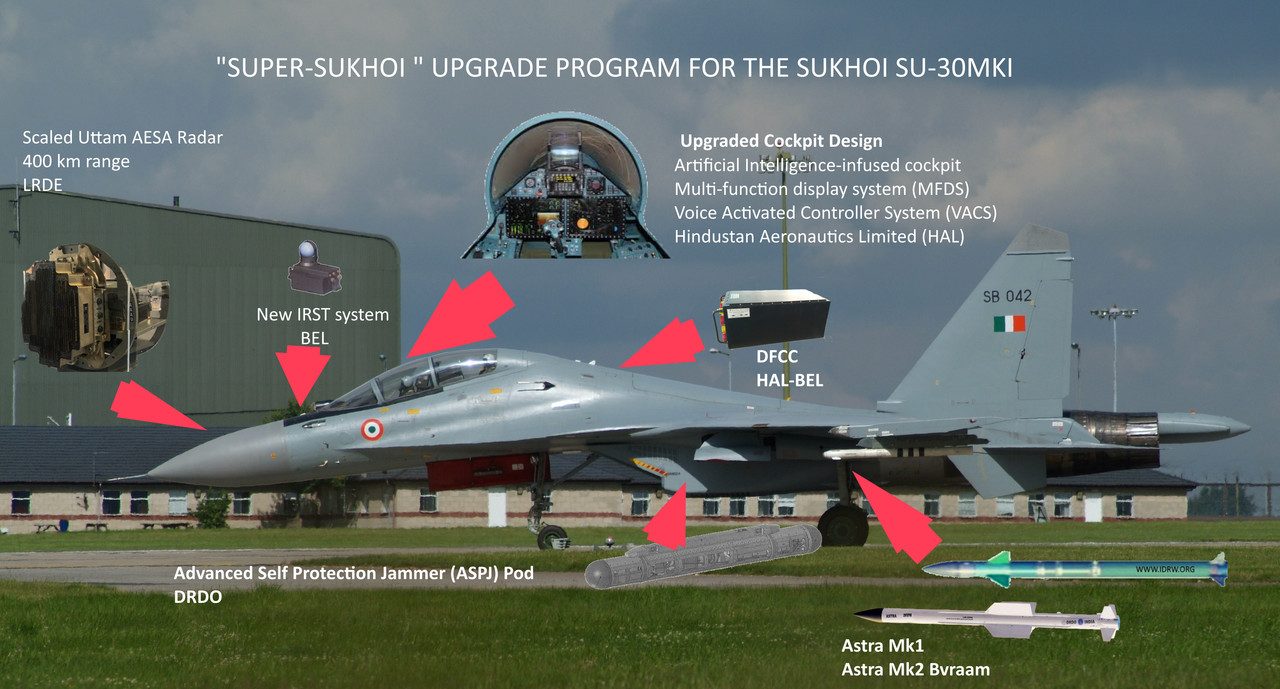
The Indian Air Force (IAF) is embarking on a transformative journey to enhance the capabilities of its formidable Su-30MKI fighter jets. The “Super Sukhoi” upgrade program, valued at over $7 billion, aims to equip these aircraft with cutting-edge avionics, radars, and electronic warfare suites.
India’s fleet of Su-30MKI fighter jets, ordered from Russia, constitutes a vital component of the IAF’s combat fleet, totaling 272 aircraft. These multi-role fighters have demonstrated their prowess in various missions and are known for their versatility and adaptability. However, to ensure their relevance in modern warfare scenarios, comprehensive upgrades are essential.
Continue reading